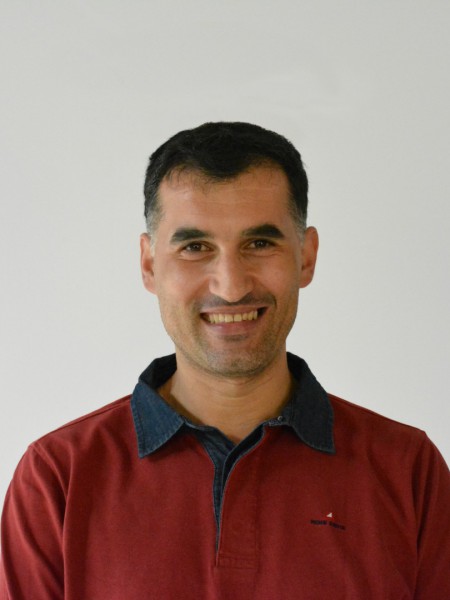abstract
In the last decade, numerous Ln-bearing metal-organic frameworks (MOFs) have been reported for luminescence thermometry applications. Although the Ln(3+) composition is always thoroughly determined, this parameter is never optimized to improve thermometric performances. Here, the optimization of thermometric performances of luminescent probes is tackled by reporting a series of mixed Eu3+-Tb3+ metal-organic frameworks. The thermometric performances are accessed as a function of the Eu3+ content yielding a maximum relative sensitivity between 0.19 and 0.44% K-1 registered at temperatures between 340 and 240 K, respectively. A meticulous theoretical investigation of the Tb3+-to-Eu3+ energy transfer in the series of mixed Eu3+-Tb3+ MOFs is also performed to determine the predominant pathway of the energy transfer. For the first time, a clear evidence of the significant influence of the Eu/Tb ratio on the energy transfer between Ln(3+) emitting centers is presented that definitively determines the operating temperature range and the maximum relative sensitivity of the luminescent thermal probes.
keywords
NONRADIATIVE ENERGY-TRANSFER; LANTHANIDE IONS; COORDINATION POLYMERS; CHEMICAL-BOND; TRANSITIONS; ABSORPTION; LIGHT; INTENSITIES; RELAXATION; COVALENCY
subject category
Materials Science, Multidisciplinary; Optics
authors
Trannoy, V; Neto, ANC; Brites, CDS; Carlos, LD; Serier-Brault, H
our authors
Projects
Collaboratory for Emerging Technologies, CoLab (EMERGING TECHNOLOGIES)
CICECO - Aveiro Institute of Materials (UIDB/50011/2020)
SusPhotoSolutions - Soluções Fotovoltaicas Sustentáveis (SUSPHOTOSOLUTIONS)
acknowledgements
This work was developed within the scope of the project CICECO - Aveiro Institute of Materials, UIDB/50011/2020, financed by Portuguese funds through the FCT/MEC and when appropriate cofinanced by FEDER under the PT2020 Partnership Agreement. Financial support from NanoHeatControl project (POCI-01-0145-FEDER-031469), funded by FEDER, through POCI and by Portuguese funds (OE), through FCT/MCTES is also acknowledged. V.T. and A.N.C.N. thanks la Fondation de la Maison de la Chimie and the SusPhotoSolutions project, CENTRO-01-0145-FEDER-000005 Portugal, respectively, for their postdoctoral fellowships.




